 |
The Home of Rest For
Horses
Registered Charity 231748 |
A BRIEF HISTORY 1886 - 2000
Over a Century of Support for Equine Welfare
The foundation of The Home of Rest for Horses
was largely due to the efforts of one lady, Miss Ann Lindo, who was appalled at
the treatment of many of the working horses on the streets of London. She
canvassed support and on 10 May 1886, it was agreed that a home of rest for
horses, mules and donkeys should be started. The first patient was an
overworked cab horse that Miss Lindo arranged to be cared for at a farm at
Sudbury, near Harrow.
| Subscriptions for the new
Society were canvassed and dinners and balls organised to raise funds. HRH
Prince Albert pledged his support and the Duke of Portland, Master of the Royal
Household, agreed to become President. By late 1887 more stabling had to be
found and an eminent London veterinary surgeon allowed his stables at Neasden
Stud Farm to be used. The Society was now simply called The Home of Rest for
Horses. |
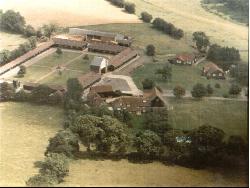 |
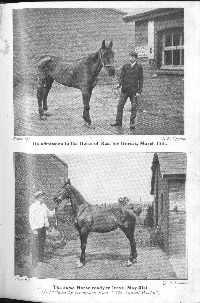 |
By 1889, The Home had outgrown
the facilities at Sudbury, which was also too far to transport sick and lame
horses. A search for larger premises resulted in building 40 loose boxes on a
leased site at Acton in North London. It was close to the railway station and
horses could easily be transported to and from central London. The Society was
now sufficiently established to hold a pool of fit, healthy, young horses which
were loaned to owners of sick horses and those whose animals needed rest from
their daily toils. |
By 1908 the Society had flourished and was able
to buy Westcroft Farm at Cricklewood which despite only being 4 miles from
Marble Arch, enjoyed 20 acres of good pasture and an impressive range of loose
boxes.
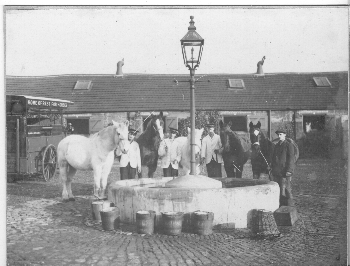
Horses at CricklewoodThe 1914-1918 war brought forage rationing which restricted the
number of horses that could be cared for. However the Society was able to
provide a fully equipped horse ambulance to help the evacuation of wounded
horses from the front line in France. At the same time Her Majesty Queen
Alexandra agreed to recognise the work of The Home by becoming Patroness and
she took an active interest in its work until her death in 1925 when Queen Mary
accepted the invitation to continue the royal patronage. The Home continued to
be successful and whilst the number of London cab horses declined, there were
still thousands of tradesmen’s horses requiring help and The Home provided
rest and recuperation for approximately 250 horses a year.
Urban spread soon reached Cricklewood and in
1933 Hampstead Council put Westcroft Farm under a compulsory purchase order for
development.
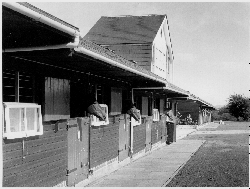 |
The search for new premises
took The Home to Boreham Wood in Hertfordshire where a new Westcroft Stables
with 75 loose boxes was built on a 25-acre site. It was at this time that a
good and enduring liaison was established with the London Royal Veterinary
College whose Dean, Sir Frederick Hobday, asserted that The Home of Rest for
Horses was the best premises of its kind in the world. The College supported
The Home by providing a service for poor owners whose animals were sent to The
Home for convalescence. |
In 1962 The Home was able to rent an additional
30 acres of land adjacent to Westcroft Stables enabling it to accommodate over
eighty horses at any one time.
By the mid-1960’s The Home had become
sufficiently well known and supported to enjoy an income that exceeded running
costs. With a reduction in the number of working horses the Committee decided
to seek new ways of extending The Home’s activities rather than using its
resources to expand what it already did. With the blessing of The Charity
Commission it was agreed that grants could be made to other charitable
organisations concerned with the welfare of horses. The first recipients of
these grants for stabling and equipment were The Royal Veterinary College and
The Equine Research Centre (now The Animal Health Trust) at Newmarket. Shortly
after this The Home’s Chairman, Gerald Critchley instigated the formation
of The Riding Schools Act Committee and The Home became the principal financial
supporter of The Riding Schools Inspection Team for the next 17 years.
By 1968 the relentless urban sprawl of London
had encircled the stables at Boreham Wood and it was necessary to look for new
premises again. The search led to a 130-acre freehold property known as Speen
Farm in the Chilterns midway between High Wycombe and Aylesbury. The sale of
the Boreham Wood site for housing development allowed a new complex, including
85 loose boxes, to be built at Speen Farm that was firmly in the green belt and
enjoyed unspoilt views over the rolling Chiltern countryside. The new Westcroft
Stables at Speen Farm were officially opened on 15 July 1975. The Home is still
based at Speen Farm today and will remain there for the foreseeable
future.
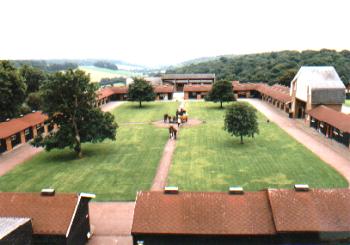
Speen A
fortunate by-product of the forced sale of the site at Boreham Wood was a
modest profit, which was to become a cornerstone of The Home’s activities
over the following 25 years. Wisely invested, this money has produced good
capital growth and healthy dividends, which has progressively enabled The Home
to assume its current position as the leading funder of equine welfare
projects. Since those first modest grants in 1965, to The Royal Veterinary
College and The Animal Health Trust, The Home has given over £10 million
to a wide variety of projects and, at the time of writing, has on-going
commitments of over £4 million. The main beneficiaries have been the
university veterinary schools either in the form of grants for improved
facilities or the funding of scientific research projects. More recently, The
Home has introduced veterinary postgraduate clinical training awards known as
residencies or clinical scholarships.
The guiding criteria for successful grant
applications has always been that they must be of potential long-term benefit
to all types of horse and that any research or investigation must be of a
non-invasive nature.
The Home’s support of equine welfare
projects has not been at the expense of The Home itself that continues to
function as a sanctuary for cases of hardship and as a final dignified resting
place for a number of old favourites who, after a lifetime of service provide a
living example to the public of exemplary care and responsible ownership. As
the Millennium comes to a close, The Home can be justifiably proud of its
achievements and the way in which it has adapted to the changing demands of
welfare of the horse.
|

